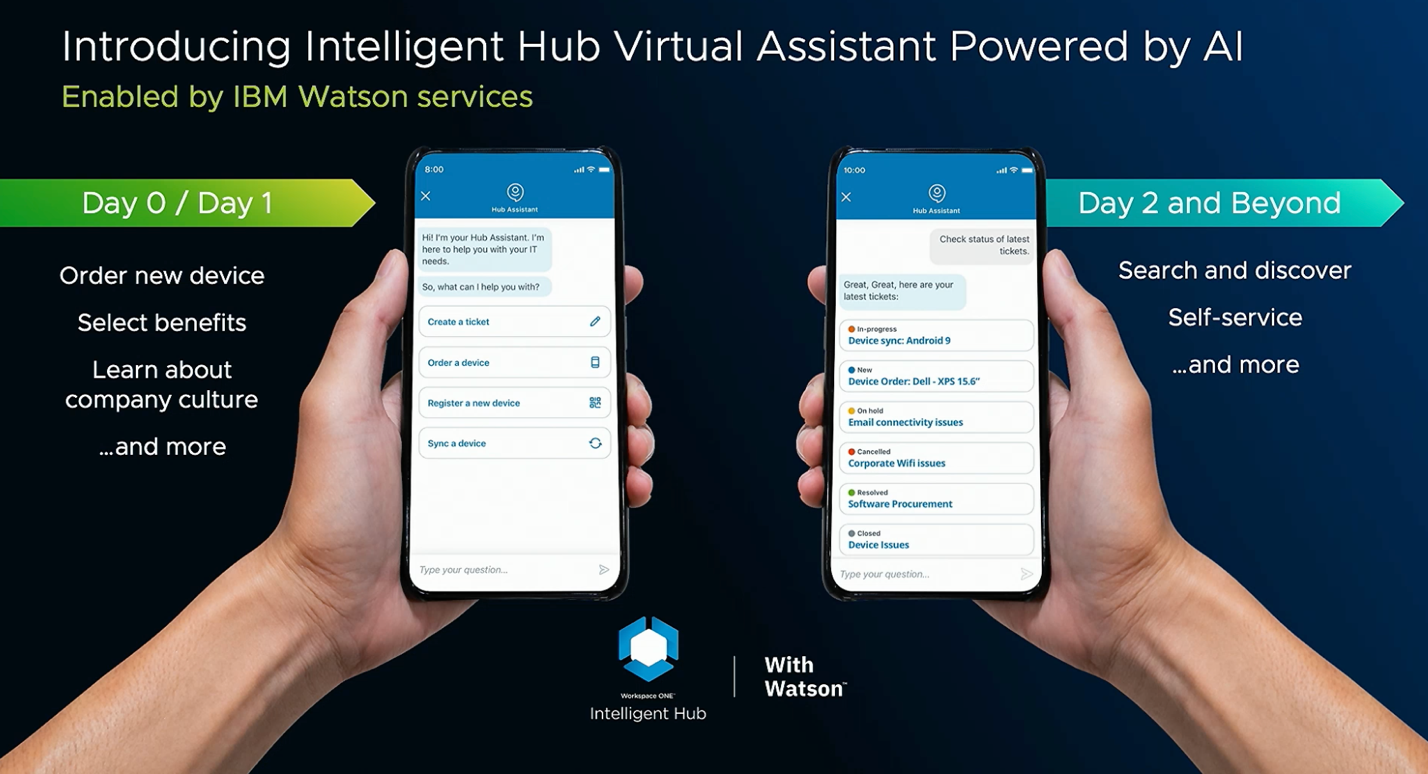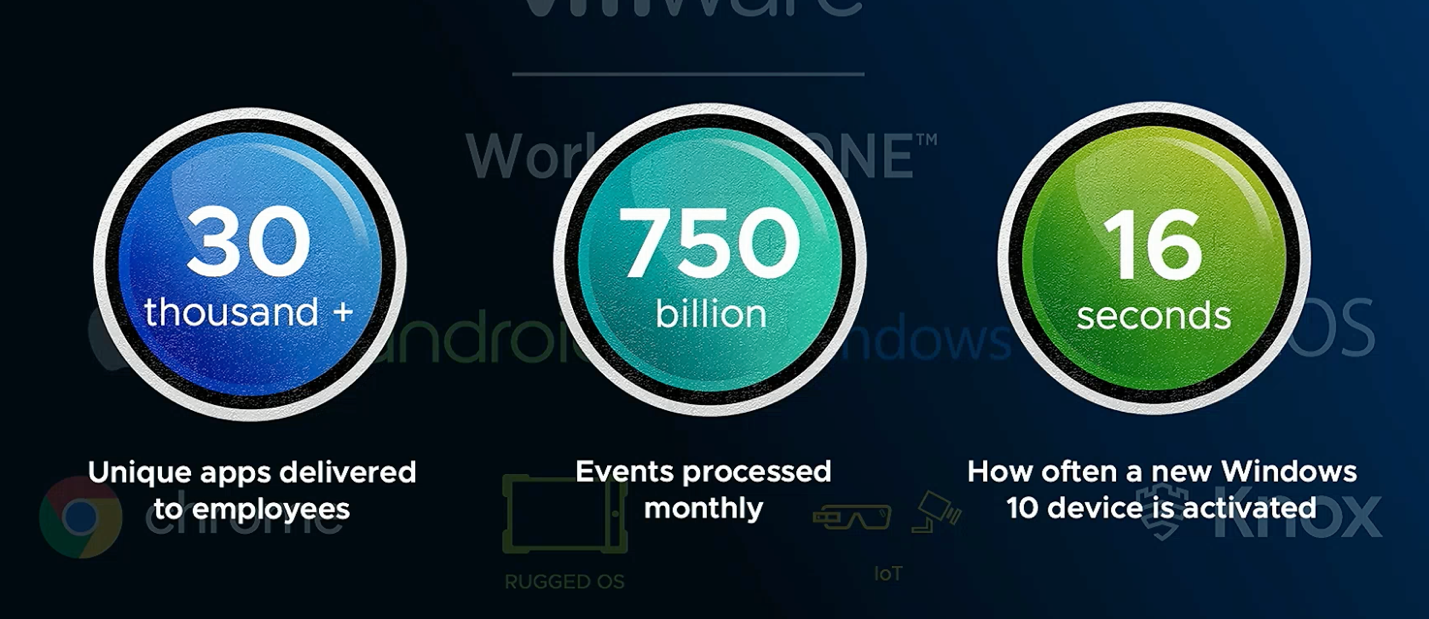Your business competes for the same talent as your competitors. And most organizations aren’t just contacting prospective employees in the same city or region anymore. You’re reaching across the globe.
Seventy-three percent of recently surveyed employees agree digital employee experience is a major influencer in attracting and keeping them in their jobs. This is a wakeup call for business leaders everywhere.
At Ricoh, we’re implementing a program called empowering digital workplaces, which means working smarter, and through this concept we provide services to our employees.
Hiroyuki Ishino, Corporate Vice President, General Manager, Digital Transformation Division, Ricoh
[embed]https://www.youtube.com/watch?v=6mAXOg5ygLY[/embed]
“Workforce transformation is critical to the broader digital transformation of business. Yet, silos of complexity fail the employee experience,” explains Shankar Iyer, VMware senior vice president and general manager, End-User Computing, during the VMworld 2019 showcase keynote. “Enterprises must drive employee experiences, which are essential to employee engagement.”
Iyer asserts that a modern digital workspace must look across devices and environments — connecting, correlating and contextualizing information from everywhere. A platform should couple services, such as unified endpoint management and zero-trust security, with visibility and intelligence. It should also seamlessly integrate with third-party solutions and APIs.
This robust, innovative end-user computing platform includes four key dimensions:
1. Employee experience
2. Modern management
3. Virtual apps and desktops
4. Zero-trust security
1. Employee Experience
Enterprises worked for years to improve new employee time-to-productivity. As organizations nudge closer to day one, employee expectations are once again rising — to day zero.
Iyer and Shawn Bass, CTO, VMware End-User Computing, believe that meeting employee onboarding needs and shrinking time to productivity is possible by integrating digital assistants.
During the keynote, they unveiled the VMware Workspace ONE Intelligent Hub Virtual Assistant Powered by AI. The innovation, enabled with IBM Watson, lets employees ask questions via text or voice with NLP (natural language processing). Employees receive guided assistance with answers to their questions or instructions to follow a specific workflow, such as selecting a new device.

“Our focus is on enabling customers to get the best experiences and on driving productivity. In most enterprise organizations, the first day is typically unproductive. We wanted to take that away; to simplify it with self-service and automation,” explains Iyer.
2. Modern Management
As a way to further unite IT and human resources (HR) in boosting digital employee experiences, Iyer and Bass debuted new digital employee experience management technology.
Iyer describes it as “the first, true, cross-platform digital employee experience management.”
For IT, it includes broader and deeper unified endpoint management (UEM) capabilities. Powerful VMware UEM is deployed at scale today, he says.

“IT leaders see the need to transform the way they are putting client technology in place,” says guest presenter, Sam Burd, president Client Solutions Group, Dell Technologies. “We need to make the process simple and fast, so they can delight the people using the technology.”
3. Virtual Apps & Desktops
Gartner predicts over the next two to three years, 30 percent of on-premises virtual desktops will move to cloud.
Bass said the end-user computing sector evolved desktop delivery to include a variety of enterprise technologies and deployment models:
- Local, distributed PCs
- Remote apps and virtual desktop infrastructure (VDI)
- Desktop as a service
- Hybrid VDI
Rather than replacing one for the next, “we’re seeing these are additive technologies,” says Iyer. Enterprises leverage more than one at a time because they offer different benefits. For example, according to Iyer, “virtual desktops and apps play a very important role in mitigating legacy application challenges in a zero-trust security model.”
Technology isn’t supposed to be a barrier. Technology is supposed to allow us to spend time with our patients. We can provide better care – remotely or at the bedside – and it allows us to get our patients out of the hospital and back in the community with their families where they belong.
Dr. Marty Trott, ENT and Medical Director for Quality/IT, St. John’s Health, Jackson Hole, WY
4. Zero-Trust Security
Security is always top of mind for enterprise IT. “Zero-trust,” Iyer says, “is rapidly becoming a model to mitigate the attack vectors for end-user computing.”
According to Iyer and Bass, enterprises get to zero-trust security by ensuring they have a digital workspace platform that enables:
- Identity and conditional access.
- Device compliance and hygiene.
- Network micro-segmentation.
- Risk analytics.
To boost adoption of the latter, VMware introduced Workspace ONE Risk Analytics. It includes automation and uses “risk scoring mechanisms to provide more granular access controls,” says Iyer.
Accelerating Enterprise Growth, Expansion and Transformation
When enterprises truly embrace an employee-first culture, they’re adopting an innovative digital workspace platform that continues to push boundaries:
- Enabling workers to contribute immediately.
- Providing choice and flexibility.
- Supporting secure remote access.
- Easing IT management burdens.
- Integrating with leading technologies and APIs.
- Ensuring no security compromise.
Because workforce transformation is critical to the broader digital transformation of business, the digital workspace helps enterprises put employees first.

